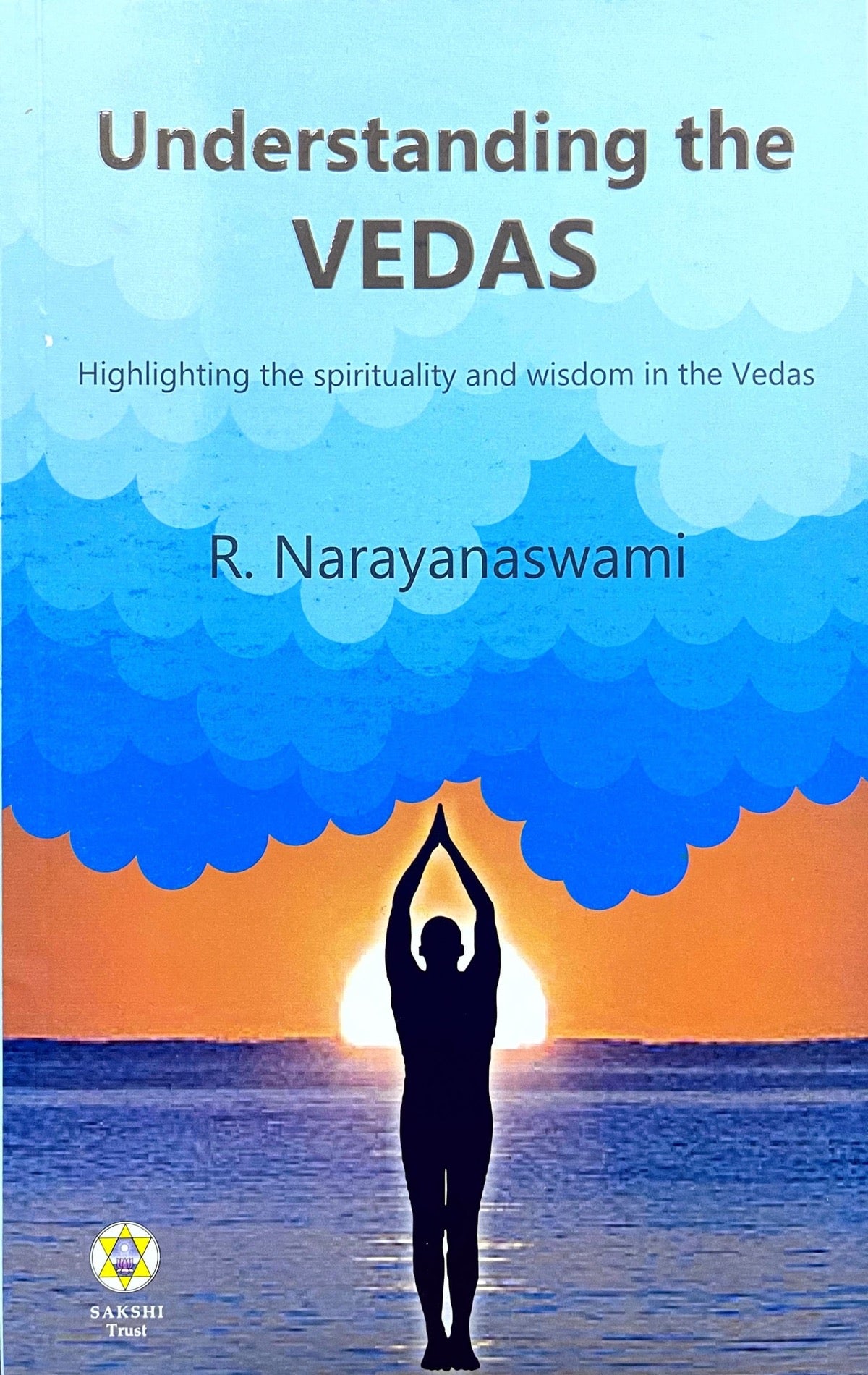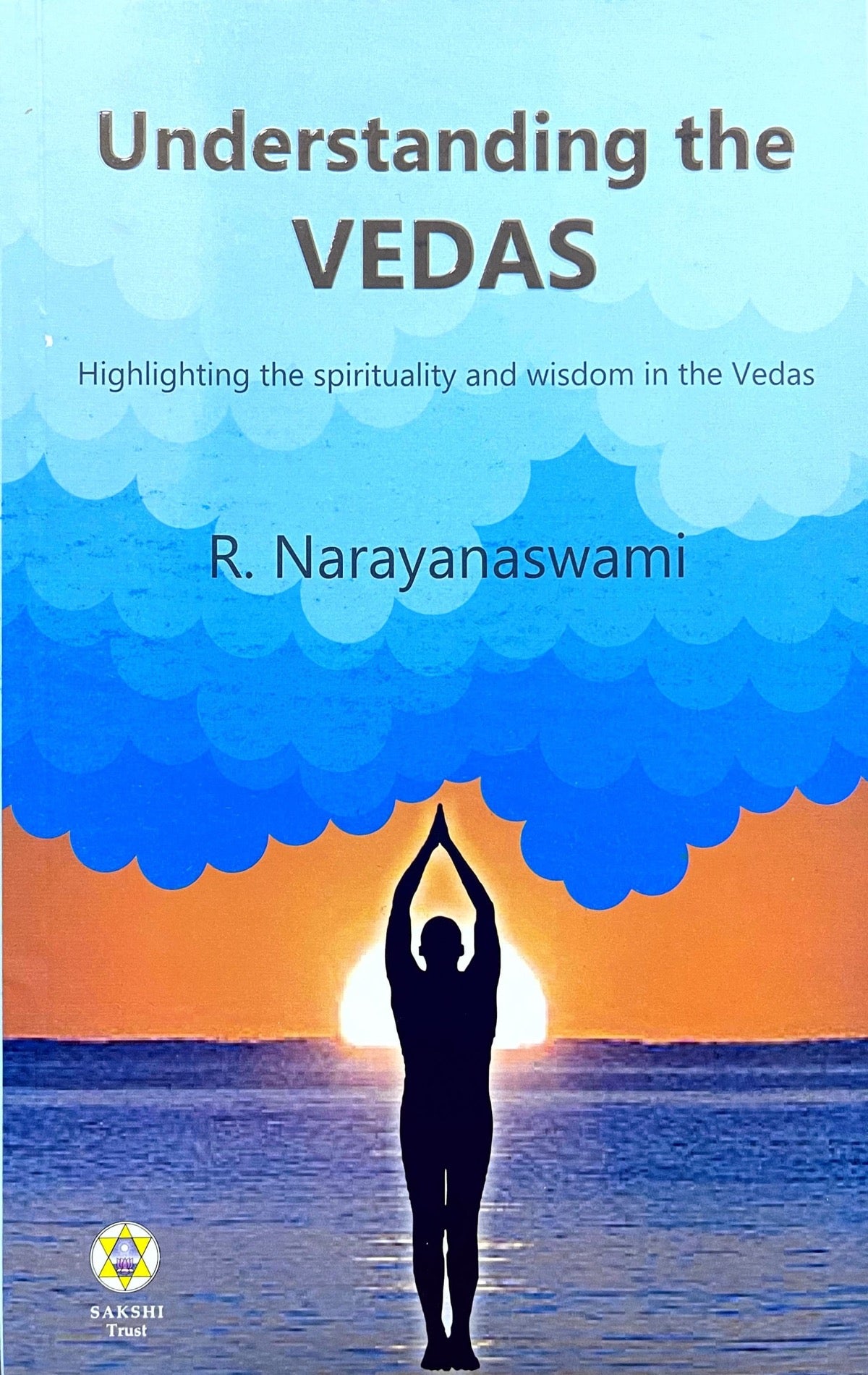SAKSHI Trust - Bangalore
Understanding the Vedas
Understanding the Vedas
Couldn't load pickup availability
The Vedas, known from the days of origin of 6,000 BCE or earlier as the oldest books of wisdom of the world, are the epistemological texts of Sanatana Dharma (SD) practiced by the people of the Indus Valley area in the Indian sub-continent. Though the Vedas are revered, they are neither studied nor properly understood by most of the SD followers in the land of origin of the Vedas. Instead, the conventional viewpoint projects the Vedas as texts needed only for karmas and rituals. The first question that needs to be addressed therefore is to understand how the Vedas are relegated to such a position today from their lofty role of world’s original book of wisdom. A related second question that must be posed is whether it is necessary to re-invent or re-discover the spirituality and wisdom inherent in the Vedas. This book provides answers to both these questions in a style that is easy to understand and keeps the reader engaged throughout.
The book is divided into 2 Parts; Part 1 explains the current understanding of the Vedas and Part 2 explains the spirituality and wisdom in the Vedas. Part 1 of the book begins with the definitions of terms used in the Vedas and the dharmic life known as SD. It explains how the Rishis (seers, sages and saints) got ‘revelations’ of Veda Mantras while they were in meditation and in super-conscious state. The book discusses the Rishis leading a life in harmony with nature, teaching the Vedas to their disciples and helping the disciples to become Rishis. Due to the lessening interests of people to pursue Vedic studies as other avenues of occupation opened up, the Rishis felt the need to emphasize the conduct of external worship and outer yajnas with large number of persons participating and witnessing such yajnas. Around 4,000 BCE or thereabout, the Vedic period ended after the time of the last surviving Rishis. Soon the meditation and the inner yajna taught by the Rishis during the Vedic period also disappeared. Only the external worship and conduct of outer yajnas remained in the post-Vedic period. The book describes the various texts that evolved from the Vedas in the post-Vedic period to explain the Vedas, texts like Brahmanas, Aranyakas, and Upanishads. The conventional viewpoint in the post-Vedic period grouped the Samhitas and the Brahmanas as the ‘karma kanda’ and the Aranyakas and Upanishads as the ‘jnana kanda’ of the Vedas, naming the latter grouping as Vedanta. This gave way to the separate and compartmentalized study of these texts. The book, however, emphasizes that the foundational study of the Veda Samhitas will be beneficial and helpful to the study of other scriptural texts of Sanatana Dharma (SD) and recommends study of Veda Samhitas first by followers of SD in Part 1 of the book. Part 2 of the book explains the works of Sri Aurobindo and Prof Kashyap and emphasizes the integrated view of the Veda Mantra Samhitas as consisting of karma (works) for success and material prosperity and spirituality and wisdom for attainment of the triple infinity of ‘Truth, Knowledge and Bliss or Ananda of realized divinity and immortality’ for all human beings who have taken birth in this world to discharge their karma. Divinization of their life will help human beings to attain all-round perfection and to rise in consciousness levels from the matter or earth station to the param padam or Supreme Station, which is the seat of the ‘triple infinity’. The book thus explains the wisdom in the Vedas and encourages all to the study and practice of the Vedas. This will help them to perform professional work of their choice with greater levels of perfection and to divinize their lives to climb the spiritual ladder to param padam or the highest station of life. It is the author’s hope that all SD followers and all those who would like to understand the Vedas will benefit by reading this book.
Technical Information
Technical Information
Author: R. Narayanaswami
Translator:
Language:
ISBN:
Know More
Know More


